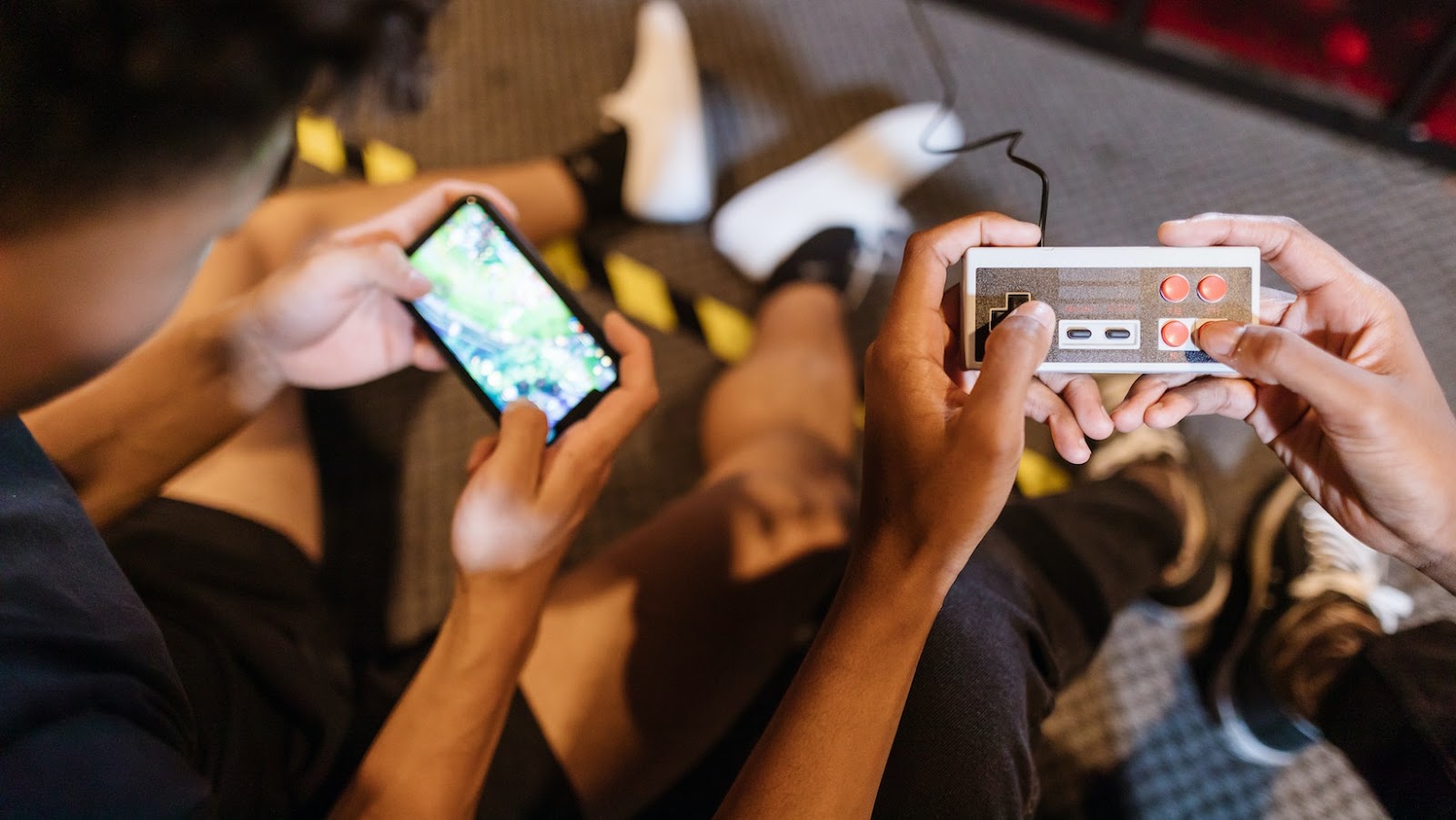Mobile gaming is becoming increasingly popular. In 2019, it was estimated that there were 1.36 billion mobile gamers worldwide and this number has been projected to increase to over 1.7 billion over the next few years. Mobile games account for 33% of all app downloads and 74% of consumer spend. By the end of 2022, it’s predicted that the number of global active mobile gamers will surpass 3 billion.
Optimizing games for mobile devices is important for unity game development companies because it helps you discern which optimizations will pay off with big performance increases and which ones are a waste of your time. It’s important to focus on optimizing the right areas and not make assumptions about what is slowing down your game’s performance. Instead, you can use tools like the Unity Profiler and platform-specific tools to locate the precise source of a lag.
Understanding the Limitations of Mobile Devices
Mobile devices have come a long way in terms of processing power and capabilities. However, they still have limitations when compared to other gaming platforms such as PCs and consoles. In this post, we’ll explore the hardware limitations of mobile devices and compare them to PC and console platforms. We’ll also discuss the impact of these limitations on game development.
Hardware Limitations of Mobile Devices
Mobile devices are designed to be portable and lightweight. This means that they have less space for hardware components such as processors, graphics cards, and memory. As a result, mobile devices often have less processing power and memory than PCs or consoles.
Another limitation of mobile devices is their battery life. Mobile devices rely on batteries to operate, which means that they need to be energy efficient. This can limit the performance of mobile devices since high-performance hardware components can consume a lot of power.
Comparison with PC and Console Platforms
PCs and consoles are designed for gaming and have more powerful hardware components than mobile devices. They have larger processors, more memory, and dedicated graphics cards that can handle complex games with high-quality graphics.

In addition to their hardware advantages, PCs and consoles also have more options for input controls, such as keyboards, mice, and game controllers. This allows for more precise control in games.
Impact on Game Development
The limitations of mobile devices can impact game development in several ways. First, developers need to optimize their games for mobile devices to ensure that they run smoothly on these platforms. This can involve reducing the complexity of game mechanics or graphics to improve performance.
Developers also need to consider the input controls available on mobile devices when designing their games. Mobile games often rely on touch controls or motion sensors, which can limit the types of gameplay mechanics that can be used.
Designing for Mobile
Mobile devices have unique hardware limitations that can impact game performance and user experience. As such, it’s important for game developers to design their Unity games with these limitations in mind. Here are some tips for designing games specifically for mobile devices:
- Keep the game simple: Since mobile devices have limited processing power and memory, it’s important to keep the game design simple. This includes using fewer textures and polygons, using lower-resolution textures, and limiting the number of objects in the scene.
- Use touch controls: Touchscreen controls are the primary input method for mobile devices, so it’s important to design the game’s user interface (UI) and user experience (UX) around this input method. Make sure to use large buttons and clear, intuitive gestures to make the game easy to play on mobile devices.
- Optimize UI elements: The UI elements of the game should be optimized for mobile devices as well. This includes using fonts that are easy to read on small screens and ensuring that UI elements are large enough to be easily tapped with a finger.
- Optimize for different screen sizes: Mobile devices come in different sizes and aspect ratios, so it’s important to design the game to accommodate different screen sizes. This can be done by using responsive design techniques that adjust the game’s layout based on the screen size.
- Use performance optimization techniques: There are a number of performance optimization techniques that can be used to improve game performance on mobile devices. This includes optimizing assets, using level of detail (LOD) techniques, and using occlusion culling to reduce the number of objects that need to be rendered in the scene.
- Consider battery life: Mobile devices have limited battery life, so it’s important to design the game to minimize battery drain. This includes optimizing game performance, minimizing network usage, and using energy-efficient algorithms.
- Test on real devices: It’s important to test the game on a variety of real mobile devices to ensure optimal performance and user experience. This includes testing on different screen sizes, different hardware specifications, and different operating systems.

Optimization Techniques
Optimizing Unity games for mobile devices requires a number of performance optimization techniques to be used. Here are some of the most common optimization techniques that can be used to improve game performance on mobile devices:
- Asset Optimization: Asset optimization involves reducing the size of game assets, such as textures and models, to improve game performance. This can be done by compressing textures, reducing polygon counts on 3D models, and removing unnecessary assets.
- Level of Detail (LOD): Level of detail involves reducing the level of detail in 3D models as the camera moves farther away from them. This helps to reduce the number of polygons that need to be rendered, which can improve game performance.
- Occlusion Culling: Occlusion culling involves hiding objects that are not visible to the player. This can be done by using software techniques that analyze the game environment and determine which objects are not visible to the player, and then cull those objects from the rendering pipeline. This helps to reduce the number of objects that need to be rendered, which can improve game performance.
- Code Optimization: Code optimization involves optimizing game code to reduce processing time and improve game performance. This can be done by identifying bottlenecks in the game code, such as slow loops or heavy computations, and optimizing those areas of code.
- Memory Optimization: Memory optimization involves optimizing the use of memory in the game. This can be done by reducing the size of game assets, using efficient data structures, and minimizing the use of global variables.
- Network Optimization: Network optimization involves optimizing network usage in the game. This can be done by minimizing the amount of data that needs to be transmitted over the network, using compressed data formats, and reducing the frequency of network updates.
Best practices for implementing these optimization techniques include:
- Prioritize optimization based on impact: Identify the areas of the game that are causing the most performance issues and prioritize optimization efforts accordingly.
- Use profiling tools: Use profiling tools to identify performance bottlenecks in the game code and to measure the impact of optimization techniques.
- Test on real devices: Test the game on a variety of real mobile devices to ensure optimal performance and user experience.
- Balance optimization with game quality: While optimization is important, it’s also important to maintain the quality and integrity of the game.
Testing and Debugging
Testing and debugging are crucial parts of the game development process, especially when designing for mobile devices. It’s important to thoroughly test and debug a Unity game on mobile devices to ensure that it runs smoothly and efficiently. Here are some reasons why testing and debugging are important:
- Mobile devices have different hardware specifications: Mobile devices come in a variety of different models and have different hardware specifications. Testing and debugging on different devices help to ensure that the game runs well on a variety of devices.
- Mobile devices have limited processing power and memory: Mobile devices have limited processing power and memory compared to desktop computers, so it’s important to test and debug to ensure that the game performs well on mobile devices.
- Mobile devices have different operating systems: Mobile devices run on different operating systems, such as iOS and Android, which can affect game performance. Testing and debugging on different operating systems help to ensure that the game runs well on all platforms.
There are several tools and techniques that can be used for testing and debugging Unity games on mobile devices. Some common tools and techniques include:
- Unity Remote: Unity Remote is a free mobile app that allows developers to test and debug their Unity games on mobile devices. The app allows developers to see and interact with the game on their mobile devices while it runs on their computers.
- Profiling tools: Profiling tools such as Unity’s built-in profiler can help developers to identify performance bottlenecks in their code and optimize their game for better performance.
- TestFlight and Google Play: TestFlight and Google Play are tools that allow developers to distribute their games to testers for testing and feedback.
- Device emulators: Device emulators such as the Android Emulator and iOS Simulator allow developers to test their games on virtual mobile devices.
Tips for ensuring optimal performance across different mobile devices include:
- Test on a variety of devices: Test the game on different mobile devices with different hardware specifications and operating systems to ensure optimal performance.
- Optimize for low-end devices: Optimize the game for low-end devices to ensure that it runs smoothly on a wider range of devices.
- Use responsive design: Use responsive design techniques to ensure that the game adapts to different screen sizes and aspect ratios.
- Monitor performance: Use profiling tools to monitor the game’s performance and identify areas that need optimization.
By testing and debugging thoroughly and using these tools and techniques, developers can ensure that their Unity games run smoothly and efficiently on a variety of mobile devices.
The Bottom Line
Optimizing Unity games for mobile devices is crucial to ensure that your game runs smoothly and provides a great user experience. By understanding the limitations of mobile hardware and focusing on the right areas for optimization, you can improve the performance of your game and make it more enjoyable for players.
As a developer, it’s important to use tools like the Unity Profiler to identify performance bottlenecks and optimize your game accordingly. You should also consider the input controls available on mobile devices when designing your game mechanics.
For further reading and resources on optimizing Unity games for mobile devices, we recommend checking out the Unity documentation on mobile optimization as well as their blog post on profiling, memory, and code architecture.
We hope this article has provided you with valuable insights into optimizing Unity games for mobile devices. By following these recommendations and best practices, you can create high-quality mobile games that players will love.
